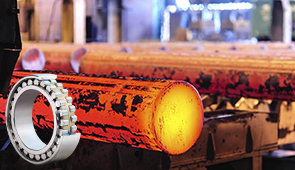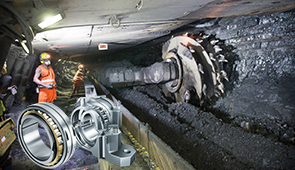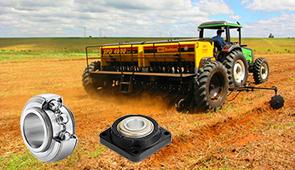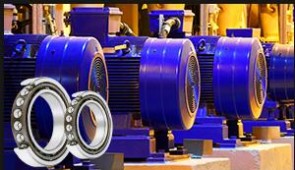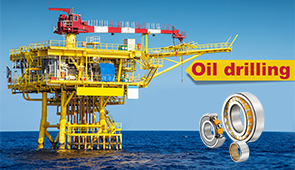Understanding the Importance of Lubricating Oil in Machinery and Vehicles
Lubricating oil plays a critical role in the efficient and reliable operation of machinery and vehicles, serving as the lifeblood of countless mechanical systems. Without proper lubrication, engines, gears, and other moving parts are subjected to excessive friction, wear, and even catastrophic failure. This article will explore the essential role of lubricating oil, including how it reduces friction, dissipates heat, and protects against corrosion. Whether you’re a machine operator, vehicle owner, or an industry professional, understanding the science and functionality behind lubricating oil is key to ensuring long-term performance and durability. Get ready to uncover the science behind this indispensable substance and learn why proper maintenance and oil selection are fundamental to machine and vehicle longevity.
How Does Lubrication Work to Reduce Friction?
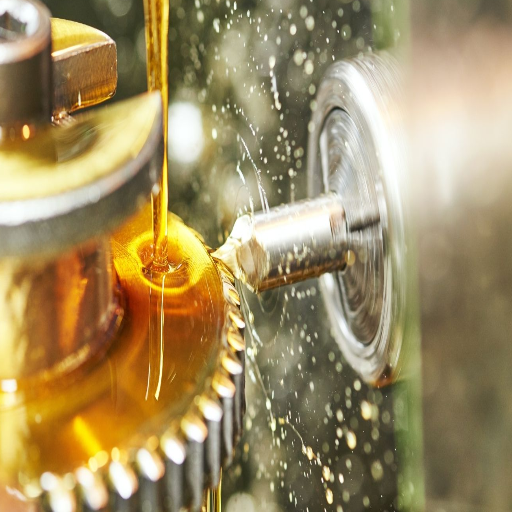
What is the Role of Oil in Lubrication?
Creating a protective film to protect touching surfaces and counter friction is the most important role of lubricating oils in lubrication. The friction between two surfaces results in the generation of heat, incremental damage, and severe material loss over an extended duration of time. Lubricating oil yields a smooth, cohesive film that aids in creating a gap between surfaces so that friction and heat can be properly managed.
Lubricating oil does serve the purpose of reducing friction, but does also carries dirt, debris, and microscopic shavings of metals, which can break surfaces over time, making lubricating oil even more useful. Modern lubricants are created using corrosion-resistant and surface-protecting detergents along with antiwear agents and extreme pressure additives to improve performance under varying conditions, like temperature. Wear is reduced, metal surface corrosion is prevented, and other optimal functionalities are achieved with the use of these additives.
Oil of sufficient viscosity is needed for the proper functioning of machines, engines, and other mechanical systems, This is a critical feature for their proper flow and creation of a gap that prevents contact between moving parts. For the smooth running of the machinery and to prolong the life of various vessel components, the type of lubricant and oil needs to be selected based on equipment requirements.
How Do Additives Enhance Lubricant Performance?
Additives perform the function of chemical compounds that change and improve the properties of base oils to enhance lubricants further. These additives serve numerous approaches, such as reduction of lubricant friction and wear, improvement of thermal stability, etc. As an example, friction modifiers chemically bond with metals and reduce the friction coefficient to improve the energy efficiency of mechanical systems. Protective films are deposited onto surfaces by anti-wear agents to eliminate direct metal contact and prolong the life of the components.
Also, viscosity index improvers maintain the lubricant’s viscosity and provide reliable performance over extreme temperature ranges especially in systems that experience high heat or cold. Detergents and dispersants serve the function of maintaining the cleanliness of the mechanical system by inhibiting deposit formation and the dispersion of contaminants. Moreover, progressive antioxidant additives slow oxidation reactions in the lubricant, thereby reducing sludge buildup and increasing the life of the oil.
The new modern formulas of additives are designed to ensure compliance with the strict environmental regulations while trying to achieve lower performance limits. Taking, for instance, the ashless additives are now more widely used owing to their lesser impact on the surrounding and their use in low-emission engine technology. Other areas of research concentration include stronger anti-friction and anti-wear nanoparticle additives, which are changes for the better in the field of lubrication science.
Why is Viscosity Important in Lubricants?
Lubricating materials have a basic characteristic, and a measure of their performance and efficiency in mechanical systems is Viscosity. Lubricating viscosity is the characteristic that describes the lubricant’s resistance to flow. Viscosity significantly aids in determining the stability of the oil film in a bearing so that the metal-to-metal contact is maintained at a minimum level. Appropriate viscosity leads to the formation of proper film thickness, leading to the prevention of wear, reduction of friction, and effective heat dissipation.
With too low viscosity, the lubricant does not form an adequate barrier. This leads to an increase in friction and wear on components. Too high viscosity is also detrimental, leading to an increase in energy consumption and reduced efficiency. More power is needed to circulate the thicker fluid. Modern formulations of lubricants try to balance these extremes. Relying on Viscosity index improvers, these lubricants perform well under varying operating temperatures, high and low extremes.
An understanding of the dynamic nature of viscosity is required in cases where machining is done on vehicles such as in automobile engines which have need high power and wide temperature ranges. Also important is its relevance in industrial equipment where uninterrupted lubrication helps to enhance operational life of machines and reduce downtime due to repairs.
By applying more modern testing methods like measuring kinematic and dynamic viscosity, manufacturers are now able to create lubricants for specific applications with precision. This creates dependability and operational convenience for industries of all types.
What are the Benefits of Using Synthetic Lubricants?
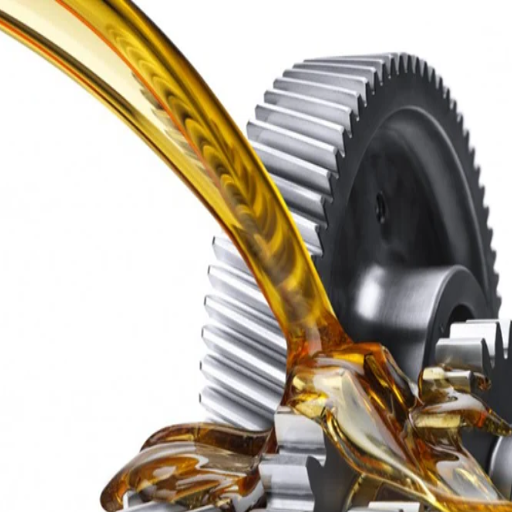
How Do Synthetic Oils Compare to Mineral Oils?
Synthetic oils are not sourced from refined crude oil like mineral oils, rather they are synthesized through chemical control processes. This leads to a better uniformity in molecular structure which results in outstanding performance while operating in extreme conditions. In terms of maintaining reliability and efficiency over prolonged periods, synthetic oils have better thermal breakdown resistance.
Furthermore, synthetic lubricants outperform the competition concerning a broad range of temperature ranges. They do not lose fluidity (which is crucial to prevent wear during cold starts) at lower temperatures, and outcompete mineral oil at higher temperatures, which allows for dependable lubrication under severe loading. A reduction in equipment and maintenance requirements, better life of equipment, and a decrease in deposits and sludge accumulation result from better temperature stability across the board.
In less demanding conditions, such as general environments, mineral oils would suffice, but for high performance applications such as advanced automotive engines, industrial turbines and heavy-duty machines, synthetic oils would be the preferred choice. Even though synthetic oils tend to be pricier than other oils for everyday use, their low friction, less wear, and longer service intervals mean overall lifecycle expenses could potentially be lower.
What are the Efficiency Gains with Synthetic Lubricants?
The improved efficiency of synthetic lubricants is due to their advanced chemical composition which reduces friction and wear even under the highest stress levels. Compared with older oils, synthetic lubricants have uniform molecular structures, which enhances and stabilizes their lubrication across changing temperatures. This guarantees functioning at peak levels in both extreme heat and below freezing temperatures, which is crucial for machinery undergoing vigorous tasks.
In addition, the use of synthetic lubricants increases the intervals between oil changes due to the oil’s advanced oxidative and thermal stability, lowering the rate of oil breakdown and extending the life expectancy of engine oils. This, combined with previously mentioned qualities, leads to heightened cost efficiency and less time wasted during repairs. Synthetic oils mitigate energy loss in mechanical systems due to lower internal friction, improving fuel economy for engines and energy savings in industrial systems.
Furthermore, synthetic lubricants often come with sophisticated, advanced additives that aid in performing, preventing corrosion and sludge formation, as well as maintaining the system’s cleanliness. This further ensures the equipment’s reliability and efficiency while also protecting vital elements from succumbing to damage too early. This, alongside other factors, helps synthetic lubricants be the preferred choice in both high-stress and high-performance demands as they provide clear benefits in effectiveness throughout various sectors.
In What Applications are Synthetic Lubricants Most Effective?
The performance of synthetic lubricants is optimal in extreme operational environments like industrial machines are put under exceptional workload. Equipment like hydraulic systems, gearboxes and compressors have all their functions enhanced through the use of synthetic lubricants. The methos of lubricating changes friction into rotation which in turn increases the longevity of these tools in mechanical engineering workshops. They also face challenges like thermal stress and physical erosion.
Synthetic lubricant keeps components of vehicles like fuel tanks functional even at throttled altitudes and harsh temperatures. Thermally stable synthetic lubricants slow down oxidation and the domain of application is not just aviation, but also high speed automobiles. Such lubricant also increases the period in which sailing vessels remain operational in salty humid conditions due to it’s anti rust and corrosion properties.
Through all of these different industries, the uses of synthetic lubricants have measurable advantages, including, but not limited to: Reduced costs associated with maintenance, Improved efficiency in energy usage, Increased lifespan of machinery, making them crucial in areas that need sustained high performance. These attributes are aided through the advancement in the technologies related to the formulation of lubricants, which persistently improve their effectiveness for changing needs of businesses and industries. How Does Lubricating Oil Protect Against Rust and Corrosion?
How Does Lubricating Oil Protect Against Rust and Corrosion?
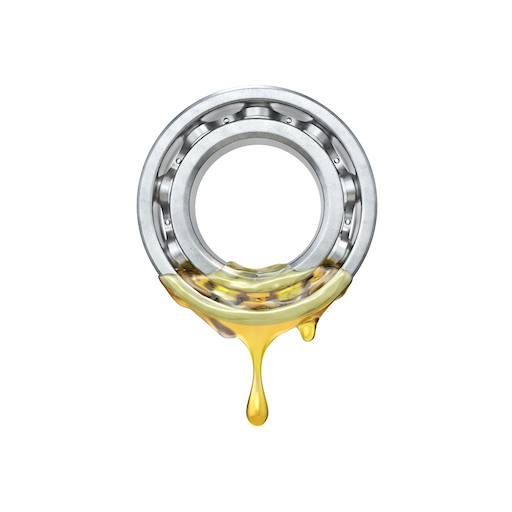
What are the Properties of Anti-Rust Lubricating Oils?
Anti-rust lubricating oils are specifically formulated to offer the highest protection against rust and corrosion without degrading the operational efficiency of the machines. They have particular physico-chemical and mechanical properties which are of importance at the industrial and commercial level. These oils must have the following characteristics:
- Sharp Film Strength: An adhesive character also exists in anti-rust lubricating oils, so they wet a metal surface and in the process of the wetting, a strong film is developed over the surface which prevents the contact of air or moisture which might oxidize the surface.
- Water Displacing Ability: They can also protect bearings, wires and shafts on ships rust might occur due to the placement of these objects into tanks. The oil must displace water very effectively in regions of high humidity as well as in areas where water flows constantly.
- Additive Anticorrosion: The formulation includes advanced additives such as amines, sulfonates, and other neutralizing agents designed to counteract the acid elements of corrosion in the protective layer’s defect and result in the creation of a barrier open to destruction.
- Thermal Stability: The oils must possess and retain all of the essential properties in a wide range of temperatures, hot and extreme cold working conditions, for heightened and decreased temperatures.
- Neutral Chemistries: Anti rust oils do not interfere with the construction of the machine. They avoid the physical and chemical actions with the materials such as seals and gaskets that will damage the system.
These outrageously precisely designed properties are a must purchase for industries where safeguarding machinery over a long period and ensuring steadfast dependability are vital.
How Do Lubricants Protect Bearings?
Bearings, like any other machinery part, need lubrication in order for them to work fine and last long. At a basic level, lubricants help to separate the inner and outer parts to minimize friction. This not only averts direct contact but also helps in the reduction of wearing and energy losses in the system. Furthermore, if friction is minimal, energy is saved and operating temperatures are lower, thus the performance of the machinery is better.
On the other hand, in mechanisms that hand overload conditions or harsh environments like high temperatures, robust construction and careful thermal management are essential to maintain consistent performance and material properties. Directing an adequate amount of lubricant helps avoid assemblage failure and enduring material degradation; ultimately forming the basis for reliable device performance.
Apart from bearing protection, lubricants also help in protecting the mechanism from external contamination. External substances like dust or dirt can penetrate the entire mechanism, which can lead to bearing failure. Protective, sealing, and specialized lubricants have been shown to work well as they shield the upper internal parts and ensure cleanliness. Not only that, most lubricants also possess anti-corrosive qualities and thus help prevent damage from the elements like moisture.
Through advanced formulations, modern lubricants are crafted to sustain extreme performance, even during high load, temperature, and pressure conditions. This innovation protects the reliability of bearings in harsh industrial settings over time, allowing for consistent operation during multi-day shifts.
What is the Impact of Oxidation on Lubricants?
Lubricants undergo oxidation, a type of chemical reaction, due to the contact of oxygen which leads to deterioration in quality and performance, gradually rising over time. Sludge, varnish, and oxidation remnants end up making the lubricant’s viscosity weak, hence making the lubricant susceptible to various wear and tear, and increasing chances of equipment failure. Excessive dirt, water, debris, or any sort of contaminant can easily damage the lubricant.
Bear in mind, this will accumulate over time and wreak havoc within the structure, not to mention the increase of temperature along with pressure contributes to this eradicating behavior. But this isn’t the only concern; having high levels of oxidative stress can bring down the life expectancy of lubricants, which requires a more frequent change and leads to further increases in operational costs. Other than that, the machinery can get corroded due to oxidative by-products, which brings me to my next point for the industrial and machinery sides, this can lead to unplanned lockouts, operational problems, and worst case scenario, losing a ton of money.
Fortunately, modern lubricants don’t leave you empty handed and come prepared, often mixing sulfide antioxidants in order to combat oxidation. These, mixed along with other elements like shielding free radicals, delay the beginning of oxidative decline. For sustaining the life span of lubrication systems in tough environments, thoroughly checking oil levels, taking precautions, and understanding needs to be top priorities.
What are the Key Considerations for Maintenance of Lubrication Systems?
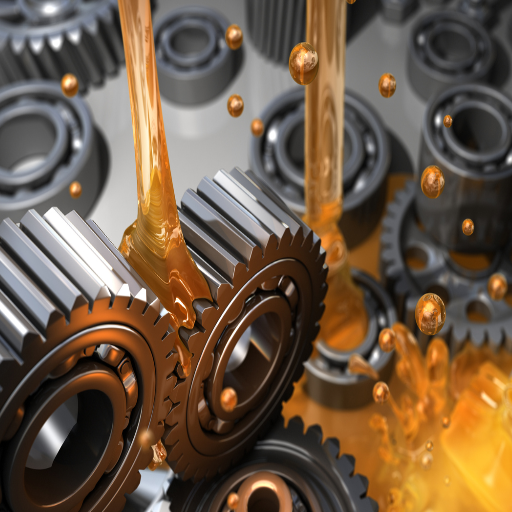
How Often Should Oil Changes Be Performed?
Guided by the type of machinery in question, the operating environment, and the oil quality, the frequency of carrying out an oil change in a lubrication system heavily relies on numerous operational factors. In the industry, it is conventionally accepted that for standard systems, oil changes are done after every 1,000 to 2,000 operational hours. Nevertheless, modern advancements in high-performance additives and synthetic oils often tout increased intervals well past the 4,000-hour mark after routine oil analysis is verified. Along with thorough analysis, synthetic oil formulations coupled with modern advancements enable rescheduling of routine maintenance windows to intervals less frequent.
Among many factors that decide an oil change interval or oil use duration, the degree of external heat stress and contamination is critical. Other than the average temperature of the environment, an extraordinarily high moisture concentration worsens the life span, as does oil and heavy particulate matter. It is thus mandatory that sensitive systems are continuously fixed towards monitoring the oil’s viscosity, Total Acid Number, and particulate concentration, thus enabling timely strategic pre-emptive oil changes. Lower speed and load roughened lubrication systems are also at risk and subject to accelerated breakdown of oil.
Oil condition monitoring devices like spectroscopic oil analyzers and particle counters are now recommended by modern predictive maintenance techniques. This maintenance technique achieves a balance by avoiding unnecessary oil changes or using oil known to be degraded. These practices enable the organization to conserve maintenance resources while improving equipment reliability and operational efficiency, lowering costs, oil expenditure, and environmental damage.
How Can Proper Maintenance Increase Equipment Longevity?
Maintenance is one of the most important factors for increasing the lifespan of equipment. Additionally, it reduces wear, enhances performance, and helps mitigate problems before they become serious. Such practices include but are not limited to lubrication, providing clean filters, and proper system calibration. Moreover, all the parts function optimally within the set specifications, enabling energy efficiency by mitigating unneeded mechanical strain and power consumption. Lastly, maintenance helps in energy efficiency improvement by ensuring all parts function as designed.
Organizations are now able to refine maintenance techniques to build unprecedented accuracy due to advanced tools in predictive maintenance and techniques like vibration analysis. Oil sampling, vibration analysis, and infrared thermography provide invaluable information on component condition, making it easier to maintain equipment to avoid failure. For example, vibration analysis identifies misalignments and imbalances, while bearing faults use infrared thermography to detect early signs of overheating in electrical systems. This has enabled predictive maintenance to tackle concerns ahead of time and extend equipment lifecycle, ensure unbroken production sequence, prevent extensive operational losses caused by unplanned downtime, and optimize resource usage.
Also, proper upkeep cultivates a safer working environment and enhances the life span of the equipment. Inadequately operating machinery poses the risk of catastrophic failures, emergency, safety hazards, and damage. Routine maintenance helps guarantee the safety of essential parts and systems which drastically reduces dangerous issues.
How is Lubricant Oil Recycling and Disposal Managed?

What are the Methods of Recycling Used Lubricants?
The treatment of used lubricants involves complex procedures aimed at recovering and recycling important parts with less impact on the environment. A well known technique is re-refining where used oil is dehydrated, vacuum distilled, and hydro treated as a series of filtration processes which removes impurities and restores the oil back to its productive state. This process creates a high standard of base oil which is usable in the production of lubricants or for other industrial uses.
Energy recovery is another technique which is more commonly practiced. In this process, used lubricants are treated as an alternative source of fuel for industries such as cement manufacturing or power plants. This method makes good use of an oil waste’s high calorific value and reduces the reliance on fossil fuels while still complying with tough emissions regulations.
In addition, the treatment of oils through chemicals and advanced stabilizing reagents also has gained traction. These new sustainable options such as bioremediation which uses living microorganisms to destroy pollutants found in used lubricants provides a more eco-friendly approach.
All these techniques help in managing the growing problem of excess waste, prevention of resource use, and eco-friendly measures set by law. Extending the lifespan of resources through these techniques shifts the balance toward optimal strategies, aiming to reduce the negative impact of unused lubricant disposal.
Why is Proper Disposal Important for Environmental Safety?
Following the correct procedures for disposing of used lubricants is crucial in maintaining the environmental safety associated with their use. Indiscriminately disposing of lubricant oils by pouring them on the soil or into water bodies is one of the worst forms of contamination that can severely damage the environment and biodiversity. One common practice of lubricants is the presence of dangerous additives such as heavy metals (lead, zinc, cadmium), polycyclic aromatic hydrocarbons (PAH), and other harmful substances.
Used lubricants also do not undergo biological degradation, which means they do not get broken down by biological organisms, and they tend to build up with time. The fact that they are non-biodegradable worsens the pollution of land and water and compounds the environmental crisis we are facing today. These practices also cause pollution to marine and land ecosystems, which disrupts not only the food webs but also the entire equilibrium of the ecosystem.
Additionally, compliance with disposal policies is in alignment with relevant laws aimed at reducing pollution and conserving resources. The recycling and re-refining of lubricants have significantly less impact on the environment since those processes reclaim important substances and save natural resources, which decreases the usage of fuels. By following set guidelines for disposal, people and businesses actively work towards a cleaner and safer environment and comply with laws that aim to safeguard ecological systems.
How Do Industries Manage Waste Lubricant Oils?
Industries handle waste lubricant oils through a collection, treatment, and re-refining system. The first step usually is the collection of waste oils from manufacturing plants, automotive shops, and industrial equipment, which needs to be collected in a proper manner. During this phase, they need to be stored in a manner that does not breach the laws on environmental pollution.
After collection, the waste oils go through rigorous screening and pre-treatment processes, which include water, dirt, and various other impurities. At this stage, more advanced technologies can be employed, such as centrifugation and vacuum distillation, which enable the separation of base oils from old additives and contaminants. Re-refining is an important step in the process where chemical and thermal treatments are used on waste oils to restore them to their original or close to original standards. The recovered base oils can now be used in the production cycle, hence creating a closed-loop system aimed at reducing waste.
Furthermore, industries are adopting real-time tracking and digital systems to improve the management of waste oils. Collectively, these initiatives reduce the environmental impacts brought by waste oils while also supporting a sustainably focused circular economy.
Frequently Asked Questions (FAQs)
Q: Why is lubricating oil important for vehicles?
A: Lubricating oil is crucial for vehicles as it reduces friction between moving parts, minimizing wear and tear. It also helps in cooling the engine, preventing rust, and enhancing the overall efficiency of the vehicle.
Q: What is the difference between mineral and synthetic lubricating oils?
A: Mineral oils are derived from refined crude oil, while synthetic oils are chemically engineered to provide superior performance. Synthetic oils generally offer better friction reduction, higher temperature resistance, and are suitable for premium and certain applications.
Q: How do oil additives enhance the performance of lubricating oils?
A: Oil additives are used to improve the performance of lubricating oils by enhancing properties such as viscosity, reducing wear, preventing rust, and minimizing additive depletion. This ensures the proper use and longevity of machinery and vehicles.
Q: Are biodegradable lubricating oils effective for industrial applications?
A: Yes, biodegradable lubricating oils, often made from vegetable oils, are effective for certain industrial applications. They offer a more environmentally friendly option without compromising performance, although they may come at a higher cost.
Q: What is the role of lubricating oil in preventing rust in machinery?
A: Lubricating oil acts as a protective barrier on metal surfaces, preventing moisture from causing rust. This is essential in maintaining the longevity and efficiency of machinery and engines.
Q: Can lubricating oil be used in transmissions?
A: Yes, specific types of lubricating oils, such as transmission fluids, are formulated to meet the requirements of transmission systems, ensuring smooth operation and protection against wear.
Q: What is the significance of grease in lubrication?
A: Grease is used in applications where oil may not be suitable, providing a thicker barrier for lubrication. It is ideal for components that are not frequently accessed and require long-lasting lubrication.
Q: What happens if there is additive depletion in lubricating oils?
A: Additive depletion can lead to reduced effectiveness of the lubricating oil, resulting in increased friction, wear, and potential damage to moving parts. Regular oil changes and using quality oils can prevent this issue.
Q: Are full synthetic oils worth the higher cost for vehicles?
A: Full synthetic oils offer superior protection, efficiency, and longevity, making them worth the higher cost for vehicles, especially those operating in extreme conditions or requiring premium performance.
UCTH213-40J-300 with Setscrew(inch)
CNSORDERNO: Normal-duty(2)
TOGN: UCTH213-40J-300
SDI: B-R1/8
SD: 2 1/2
UCTH212-39J-300 with Setscrew(inch)
CNSORDERNO: Normal-duty(2)
TOGN: UCTH212-39J-300
SDI: B-R1/8
SD: 2 7/16
UCTH212-38J-300 with Setscrew(inch)
CNSORDERNO: Normal-duty(2)
TOGN: UCTH212-38J-300
SDI: B-R1/8
SD: 2 3/8
UCTH212-36J-300 with Setscrew(inch)
CNSORDERNO: Normal-duty(2)
TOGN: UCTH212-36J-300
SDI: B-R1/8
SD: 2 1/4
UCTH211-35J-300 with Setscrew(inch)
CNSORDERNO: Normal-duty(2)
TOGN: UCTH211-35J-300
SDI: B-R1/8
SD: 2 3/16
UCTH211-34J-300 with Setscrew(inch)
CNSORDERNO: Normal-duty(2)
TOGN: UCTH211-34J-300
SDI: B-R1/8
SD: 2 1/8












